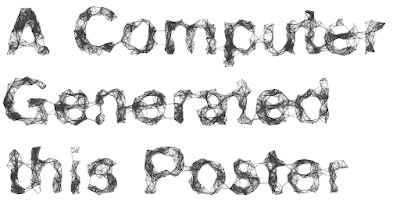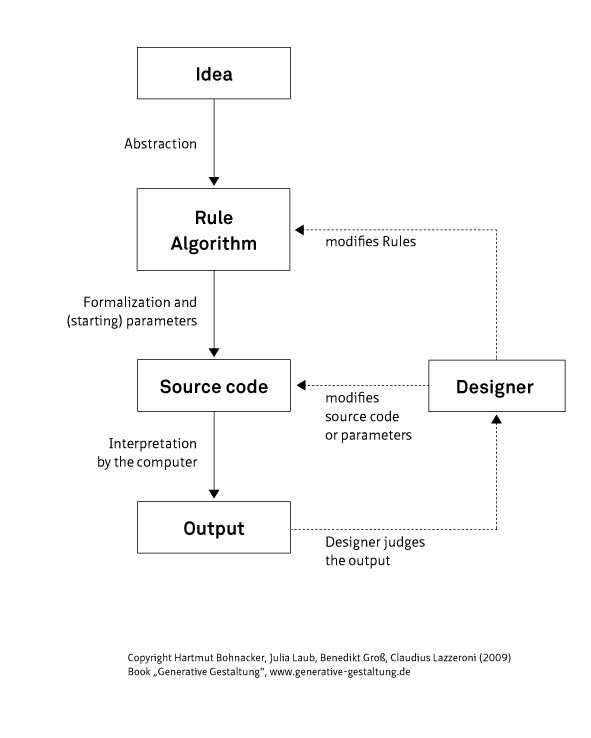I discovered the term Generative Design by accident, when I was surfing on Instagram, and I saw an amazing image that was created using this technique. Then, I started looking for articles, videos, and books, to learn more about it.
Nowadays, I carry an increasing appreciation for this field, since I also consider myself a visual artist.
Therefore, I would like to share some of the content that I've been creating and finding for those who may be also interested in this intersection between visual arts and programming:
Generative design is an iterative design process that involves a program that will generate a certain number of outputs that meet certain constraints, and a designer that will fine tune the feasible region by changing minimal and maximal values of an interval in which a variable of the program meets the set of constraints, in order to reduce or augment the number of outputs to choose from. The program doesn't need to be run on a machine like a digital computer, it can be run by a human for example with pen and paper. The designer doesn't need to be a human, it can be a test program in a testing environment or an artificial intelligence, for example a generative adversarial network. The designer learns to refine the program (usually involving algorithms) with each iteration as their design goals become better defined over time.
The output could be images, sounds, architectural models, animation, and much more. It is therefore a fast method of exploring design possibilities that is used in various design fields such as art, architecture, communication design, and product design.
The process combined with the power of digital computers that can explore a very large number of possible permutations of a solution enables designers to generate and test brand new options, beyond what a human alone could accomplish, to arrive at a most effective and optimized design. It mimics nature’s evolutionary approach to design through genetic variation and selection.
Generative design is becoming more important, largely due to new programming environments or scripting capabilities that have made it relatively easy, even for designers with little programming experience, to implement their ideas. Additionally, this process can create solutions to substantially complex problems that would otherwise be resource-exhaustive with an alternative approach making it a more attractive option for problems with a large or unknown solution set. It is also facilitated with tools in commercially available CAD packages. Not only are implementation tools becoming more accessible but also tools leveraging generative design as a foundation.

